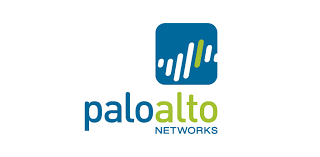Cyber Security
IT security is a set of cybersecurity strategies that prevents unauthorized access to organizational assets such as computers, networks, and data. It maintains the integrity and confidentiality of sensitive information, blocking the access of sophisticated hackers.
As hackers get smarter, the need to protect your digital assets and network devices is even greater. While providing IT security can be expensive, a significant breach costs an organization far more. Large breaches can jeopardize the health of a small business. During or after an incident, IT security teams can follow an incident response plan as a risk management tool to gain control of the situation.
Security Threats:
The threats countered by cyber security are three-fold:
Cyber Crime includes single actors or groups targeting systems for financial gain or to cause disruption.
Cyber Attack often involves politically motivated information gathering.
Cyber Terrorism is intended to undermine electronic systems to cause panic or fear.
Malicious actors gain control of computer systems using some of this methods:–
1. Malware
Malware means malicious software. One of the most common cyber threats, malware is software that a cybercriminal or hacker has created to disrupt or damage a legitimate user’s computer. Often spread via an unsolicited email attachment or legitimate-looking download, malware may be used by cybercriminals to make money or in politically motivated cyber attacks.
There are a number of different types of malware, including:–
Virus: A self-replicating program that attaches itself to clean file and spreads throughout a computer system, infecting files with malicious code.
Trojan Horse: A type of malware that is disguised as legitimate software. Cybercriminals trick users into uploading Trojans onto their computer where they cause damage or collect data.
Spyware: A program that secretly records what a user does, so that cybercriminals can make use of this information. For example, spyware could capture credit card details.
Ransomware: Malware which locks down a user’s files and data, with the threat of erasing it unless a ransom is paid.
Adware: Advertising software which can be used to spread malware.
Botnets: Networks of malware infected computers which cybercriminals use to perform tasks online without the user’s permission.
2. SQL injection
An SQL (structured language query) injection is a type of cyber-attack used to take control of and steal data from a database. Cybercriminals exploit vulnerabilities in data-driven applications to insert malicious code into a databased via a malicious SQL statement. This gives them access to the sensitive information contained in the database.
3. Phishing
Phishing is when cybercriminals target victims with emails that appear to be from a legitimate company asking for sensitive information. Phishing attacks are often used to dupe people into handing over credit card data and other personal information.
4. Man-in-the-middle attack
A man-in-the-middle attack is a type of cyber threat where a cybercriminal intercepts communication between two individuals in order to steal data. For example, on an unsecure WiFi network, an attacker could intercept data being passed from the victim’s device and the network.
5. Denial-of-service attack
A denial-of-service attack is where cybercriminals prevent a computer system from fulfilling legitimate requests by overwhelming the networks and servers with traffic. This renders the system unusable, preventing an organization from carrying out vital functions.
Our offerings:
We help organizations deploy Advanced Threat Protection solutions for endpoint, network and cloud environments with independently validated security architectures that provide robust protection, including against advanced attacks.
Our unique solutions brought to you from leading vendors to cover the entire lifecycle of threat protection.

Network security
Network security is used to prevent unauthorized or malicious users from getting inside your network. This ensures that usability, reliability, and integrity are uncompromised. This type of security is necessary to prevent a hacker from accessing data inside the network. It also prevents them from negatively affecting your users’ ability to access or use the network.
Network security has become increasingly challenging as businesses increase the number of endpoints and migrate services to public cloud.

Internet security
Internet security involves the protection of information that is sent and received in browsers, as well as network security involving web-based applications. These protections are designed to monitor incoming internet traffic for malware as well as unwanted traffic. This protection may come in the form of SSL certificates, firewalls, antimalware, and antispyware.

Endpoint security
Endpoint security provides protection at the device level. Devices that may be secured by endpoint security include cell phones, tablets, laptops, and desktop computers. Endpoint security will prevent your devices from accessing malicious networks that may be a threat to your organization. Advance malware protection and device management software are examples of endpoint security.

Cloud security
Applications, data, and identities are moving to the cloud, meaning users are connecting directly to the Internet and are not protected by the traditional security stack. Cloud security can help secure the usage of software-as-a-service (SaaS) applications and the public cloud. A cloud-access security broker (CASB), secure Internet gateway (SIG), and cloud-based unified threat management (UTM) can be used for cloud security.

Application security
With application security, applications are specifically coded at the time of their creation to be as secure as possible, to help ensure they are not vulnerable to attacks. This added layer of security involves evaluating the code of an app and identifying the vulnerabilities that may exist within the software.
Our Security Partners:

Palo Alto Networks provides a wide suite of enterprise-level next generation firewalls, with a diverse range of security features for your network.

Fortinet delivers network security solutions for global businesses to achieve a security-driven network and protection from sophisticated threats.

Acronis delivers cyber protection for data, applications, and systems through award-winning technologies.

PECB is a certification body which provides education and certification under ISO/IEC 17024 for individuals on a wide range of disciplines. PECB offers its expertise on multiple fields, including, but not limited to, Information Security, Privacy and Data Protection &Business Continuity.
Take a step towards peace of mind
GET A FREE CYBER SECURITY ASSESSMENT

